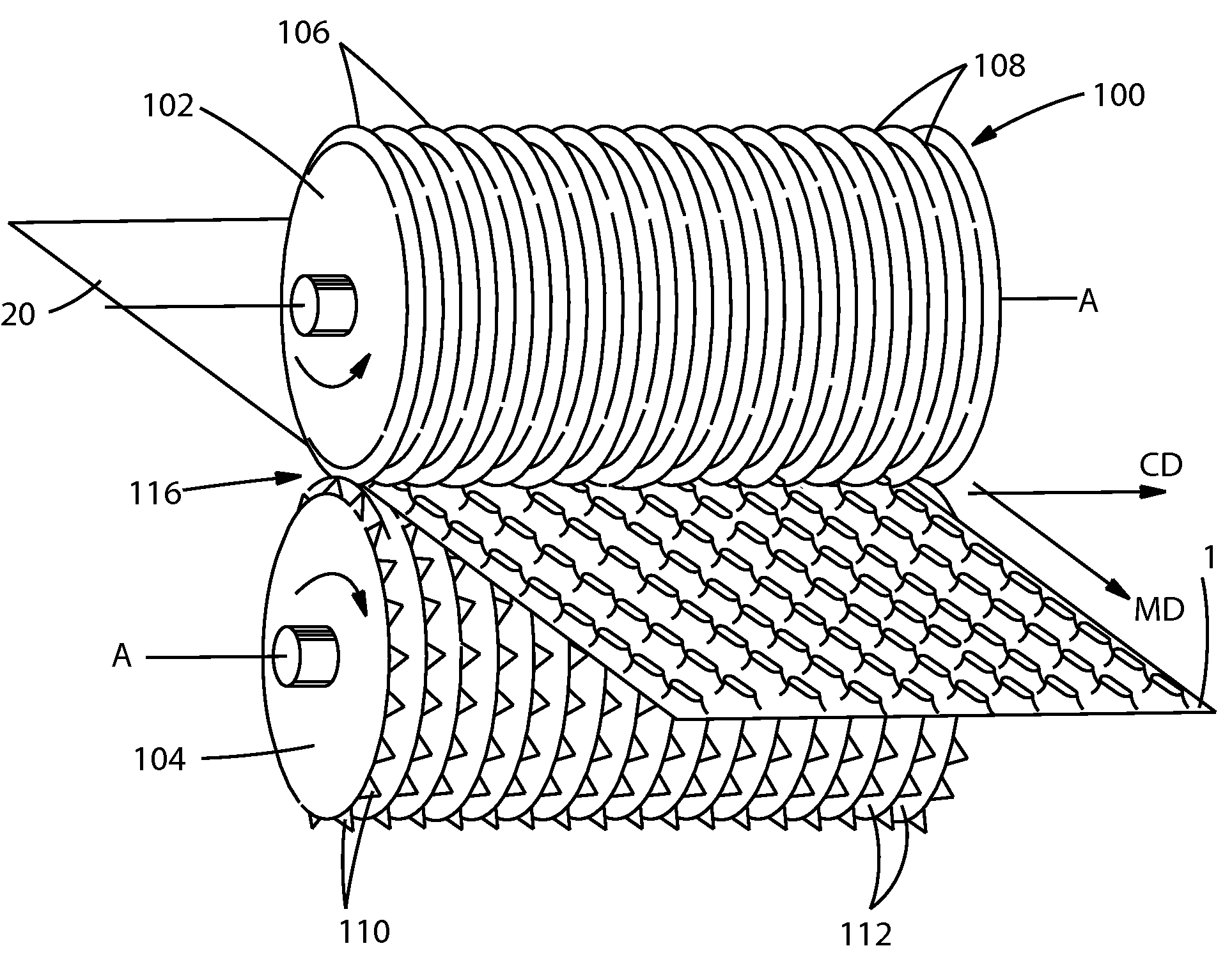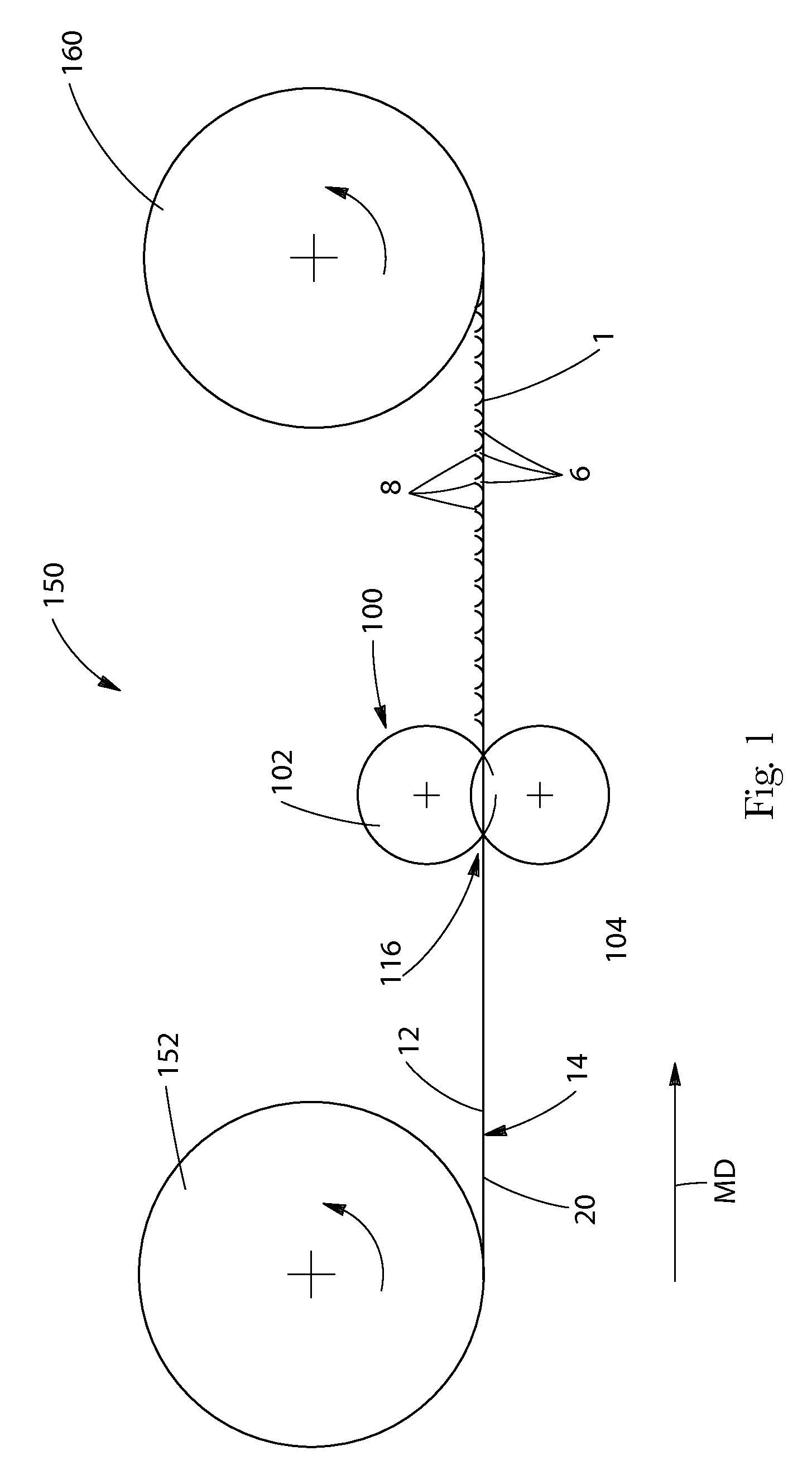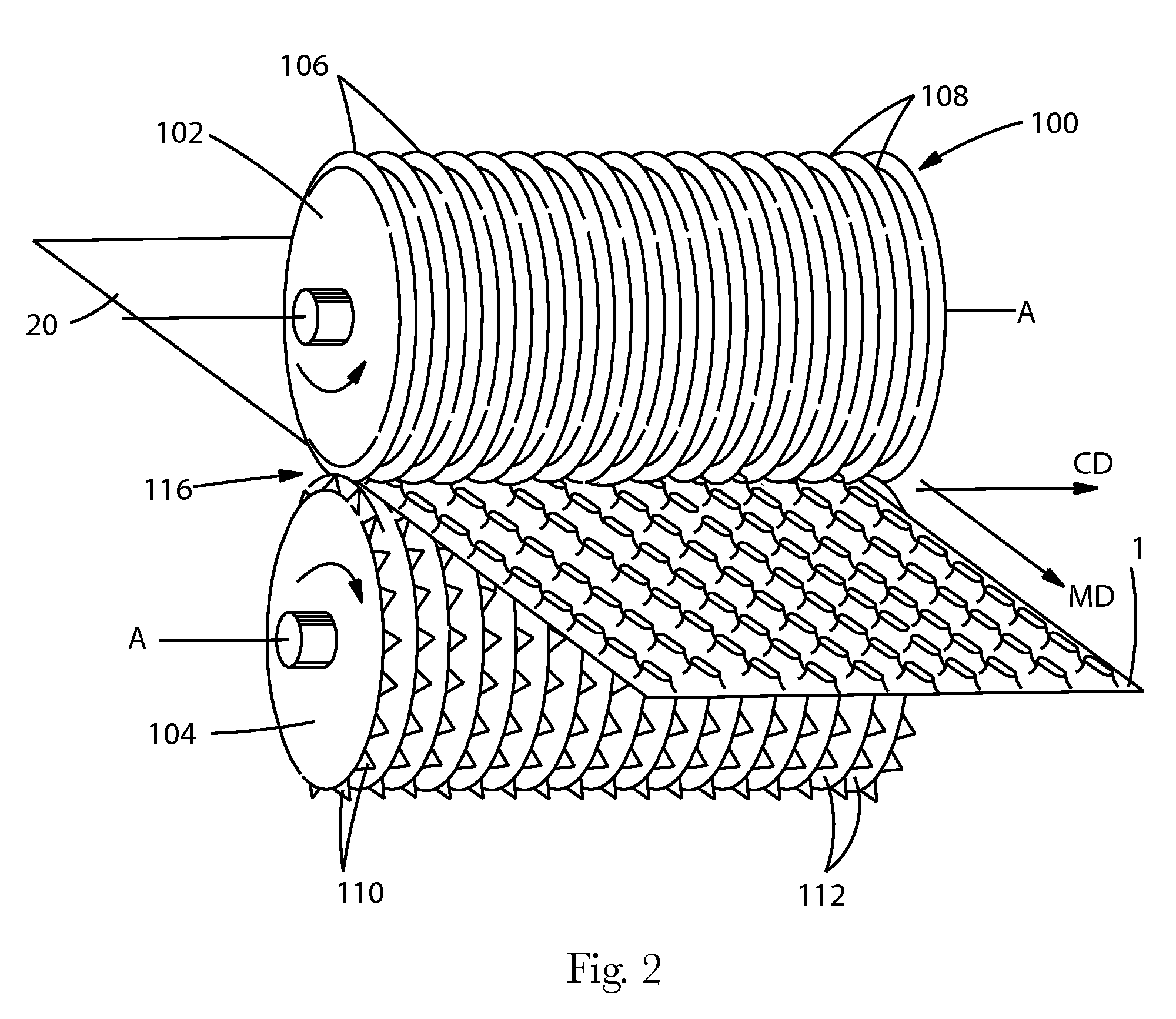Method for Making an Apertured Web
a technology of apertures and apertures, applied in the field of apertured webs, can solve the problems of limited size and shape of apertures, and achieve the effect of increasing the open area
- Summary
- Abstract
- Description
- Claims
- Application Information
AI Technical Summary
Benefits of technology
Problems solved by technology
Method used
Image
Examples
example 1
[0100]Samples were made by running micro apertured, 100 mesh films against 0.050 inch pitch forming apparatus. For sample 1, the teeth were oriented in the MD. For sample 2, the teeth were oriented in the CD. Both films were activated at a temperature of 75° C. and at a line speed of 50 feet / min. FIG. 15a of Sample 1 shows the resultant apertures produced by the MD oriented teeth and FIG. 15b of sample 2 is a result of orienting the teeth in the CD. As shown, the aperture length remains the same while the width is increased thereby decreasing the aspect ratio.
TABLE 1AverageAverageAverageAperture LengthAperture WidthAperture AspectSample(mm)(mm)RatioFIG.11.430.285.115a21.440.811.815b
example 2
[0101]Samples were apertured a by orienting the film samples relative to the teeth so that the effects of the orientation of the teeth relative to the molecular orientation of the film could be assessed. 100 mesh film samples were apertured using 0.050 inch pitch intermeshing plates on the high speed research press described in U.S. Pat. No. 7,024,939 and U.S. Pat. No. 7,062,983. Samples were cut into rectangular pieces (50 mm×200 mm) for testing. Five different samples were prepared, each cut at a different angle relative to the machine direction of the film. For sample 3, the sample was cut in alignment with the machine direction of the film, and so is designated to have an orientation angle of 0°. Sample 7 was cut with the long dimension of the sample aligned to the cross direction of the film and so is designated to have an orientation angle of 90°. Other samples were cut at 30, 45 and 60° relative to the machine direction of the film. For testing, the long dimension of the samp...
example 3
[0110]Film samples were tested for shrinkage according to ASTM method D2732-03. Square samples (4 inches on each side) were cut from 100 mesh film, immersed in 100° C. glycerol for 30 seconds, then removed and dimensions re-measured. Five specimens were tested for each material and the results averaged. Without any pre-straining, the 100 mesh film sample exhibited shrinkage in the machine direction but not in the cross direction, indicating that the material is primarily oriented in the machine direction. The film was prestrained by incrementally stretching the web in the cross direction. After incremental stretching, the 100 mesh samples exhibited additional shrinkage in the cross direction, indicating that molecular orientation had been introduced in the cross direction as well. The data in Table 1 demonstrates that the magnitude of the shrinkage (and therefore molecular orientation) in the cross direction increases with depth of engagement employed during the ring-rolling process...
PUM
| Property | Measurement | Unit |
|---|---|---|
| Angle | aaaaa | aaaaa |
| Length | aaaaa | aaaaa |
| Length | aaaaa | aaaaa |
Abstract
Description
Claims
Application Information
 Login to View More
Login to View More - R&D
- Intellectual Property
- Life Sciences
- Materials
- Tech Scout
- Unparalleled Data Quality
- Higher Quality Content
- 60% Fewer Hallucinations
Browse by: Latest US Patents, China's latest patents, Technical Efficacy Thesaurus, Application Domain, Technology Topic, Popular Technical Reports.
© 2025 PatSnap. All rights reserved.Legal|Privacy policy|Modern Slavery Act Transparency Statement|Sitemap|About US| Contact US: help@patsnap.com



